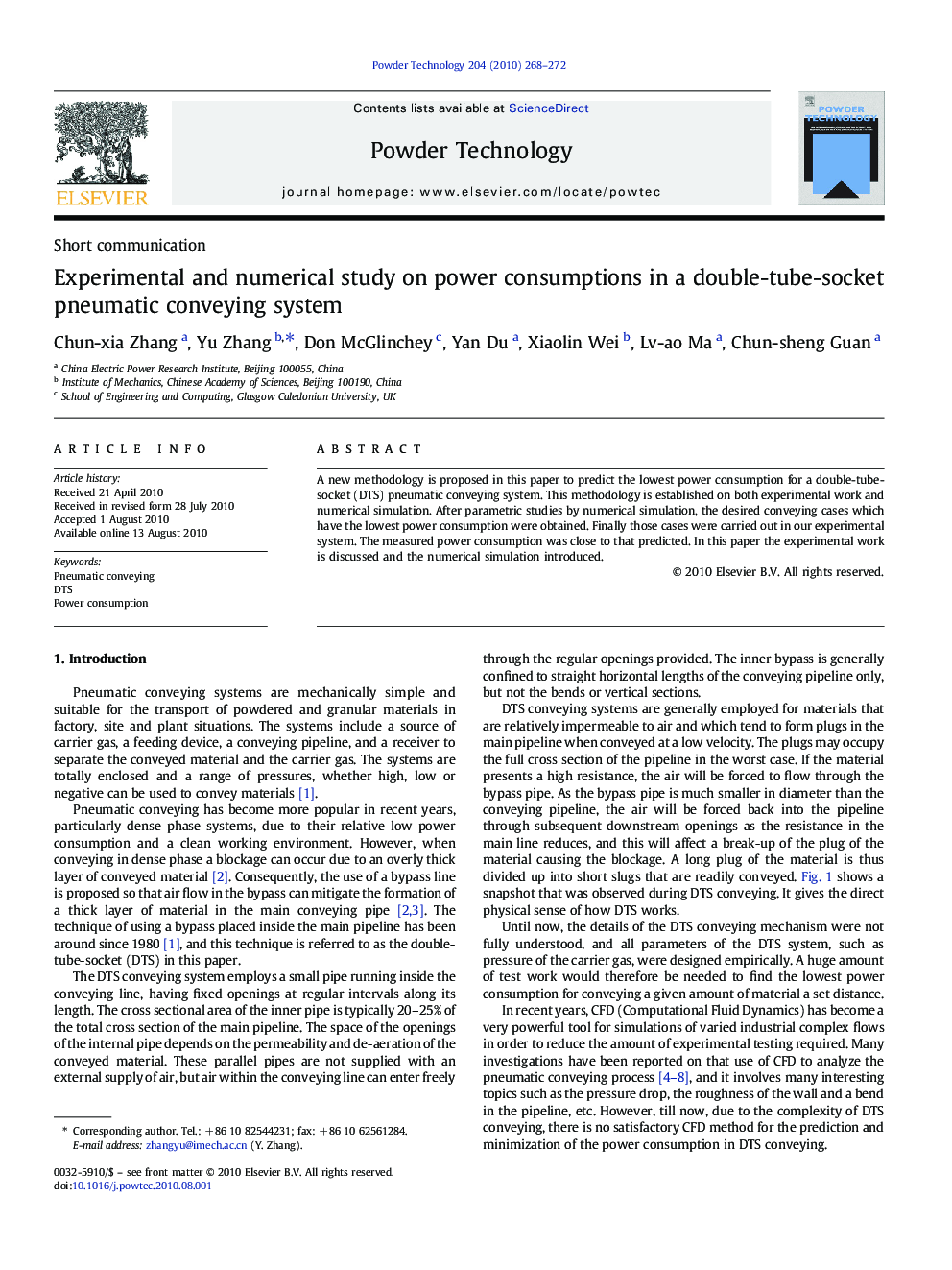| Article ID | Journal | Published Year | Pages | File Type |
|---|---|---|---|---|
| 237750 | Powder Technology | 2010 | 5 Pages |
A new methodology is proposed in this paper to predict the lowest power consumption for a double-tube-socket (DTS) pneumatic conveying system. This methodology is established on both experimental work and numerical simulation. After parametric studies by numerical simulation, the desired conveying cases which have the lowest power consumption were obtained. Finally those cases were carried out in our experimental system. The measured power consumption was close to that predicted. In this paper the experimental work is discussed and the numerical simulation introduced.
Graphical AbstractA new methodology is proposed in this paper to predict the lowest power consumption for a double-tube-socket (DTS) pneumatic conveying system. This methodology is established on both experimental work and numerical simulation. It shows that the predicted results are in good agreement with experimental results.Figure optionsDownload full-size imageDownload as PowerPoint slide
